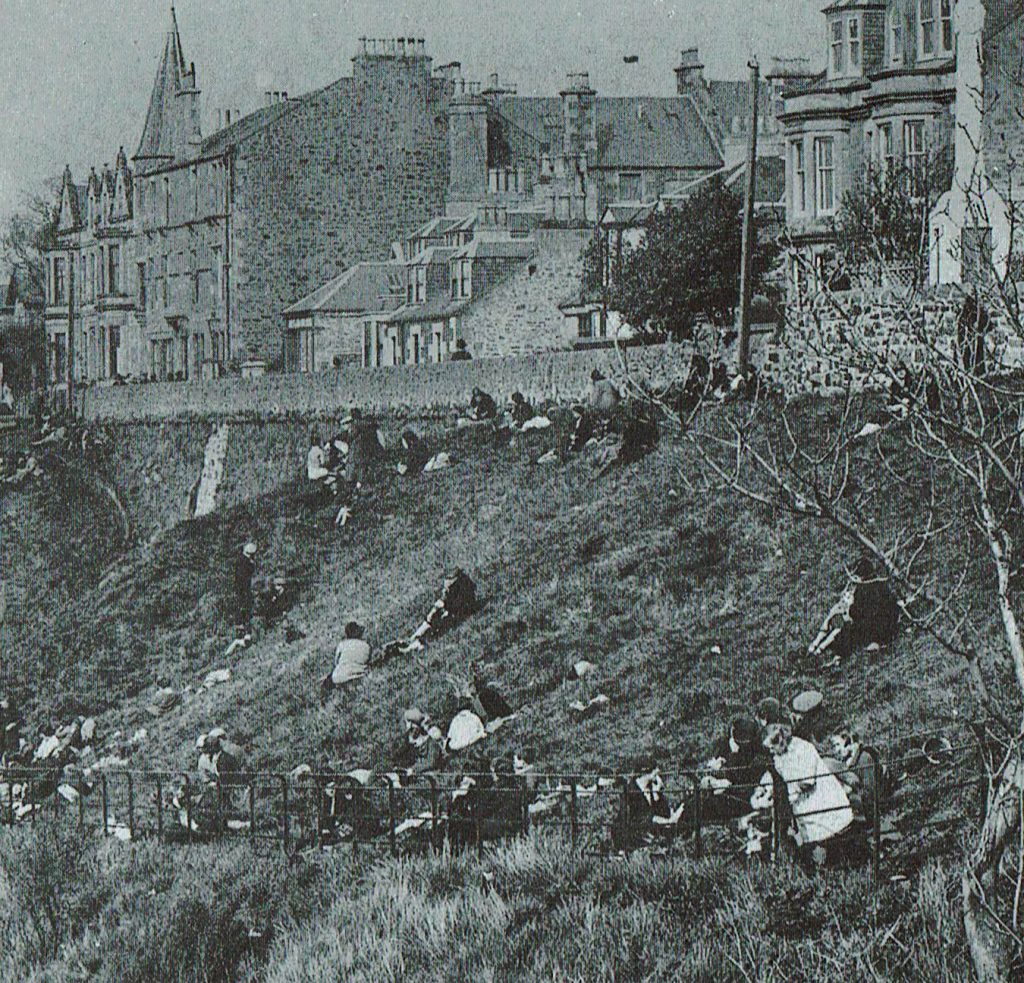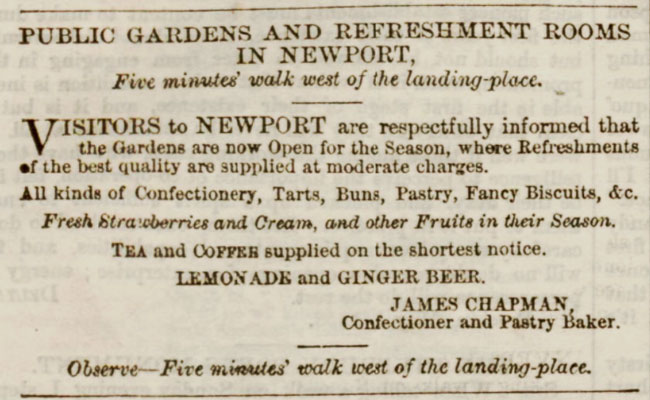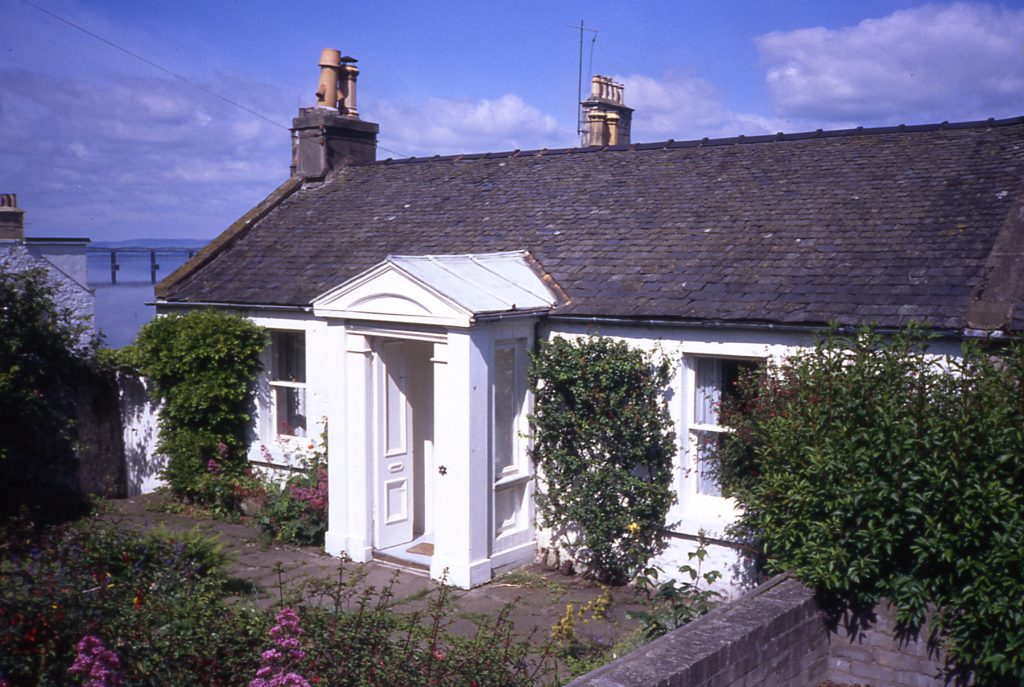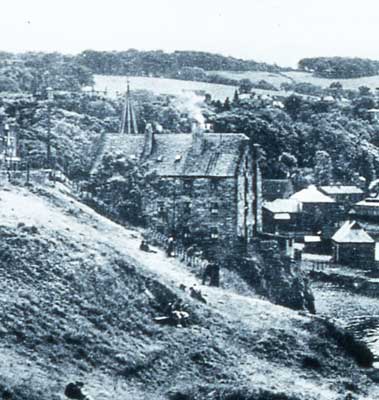
The day trippers from Dundee in the 1950s would turn left on leaving the ferry pier and make their way to the Braes. They passed by the Tayside Tearooms and considered whether to pop in for a cuppa or wait until they returned on their way home. After all, they could call in at Café Newport on the High Street or buy ice creams from Tommy Bain with his cart on the Braes.
But a hundred years earlier, those Dundonians who wanted to avoid the crowds on the Braes were encouraged to make their way to the right, up Boat Brae and along the main road towards Woodhaven. A five-minute walk would take them to the ideal spot.
The following advert appeared in the People’s Journal on 15 May 1858, in other local newspapers through the summer, and even in the 1858 Dundee Directory:

Image © THE BRITISH LIBRARY BOARD. ALL RIGHTS RESERVED.
It sounds perfect, and no doubt it was. Overlooking the river, in the calm surroundings of West Newport, it offered just the place to spend a relaxing afternoon, with a mouth-watering range of refreshments available.

The proprietor, James Chapman, was a well-known Dundee confectioner who had a business at 121 Murraygate. He had moved into his Newport house a few years earlier and was to stay there for over 60 years. Its location provided the perfect opportunity to expand his business venture by catering for the more discerning Dundee escapee. His home was Yewbank (like all houses on West Road it was named after a plant) but it is now simply 68 West Road.
So where were the ‘Public Gardens and Refreshment Rooms’?

My first thought was that they were in his own garden with teas available in his parlour or a summer house overlooking the river. But the grounds are small, access is only through the house, his wife had a young and expanding family and the house had only 3 rooms at that time.
My second was that one or more nearby gardens on West Road were opened to the public – an early ‘Newport’s Gardens Scheme’. They certainly would be a very attractive and tranquil location, a world away from the grime, smoke and smells of industrial Dundee.
We shall probably never know which it was, but my money is on his own property. Either way, Newport’s summer facilities with houses rented out ‘for the season’ now had an added attraction.
Sources:
Peoples Journal, 15 May 1858, British Newspaper Archive
Obituary, James Chapman, Courier, Dundee 23 Mar 1915 p4
The Post Office Dundee Directory … for 1858-59
1861 Census, Registration District 431, Forgan, Fife, Enumeration District 3, Page 25,26

